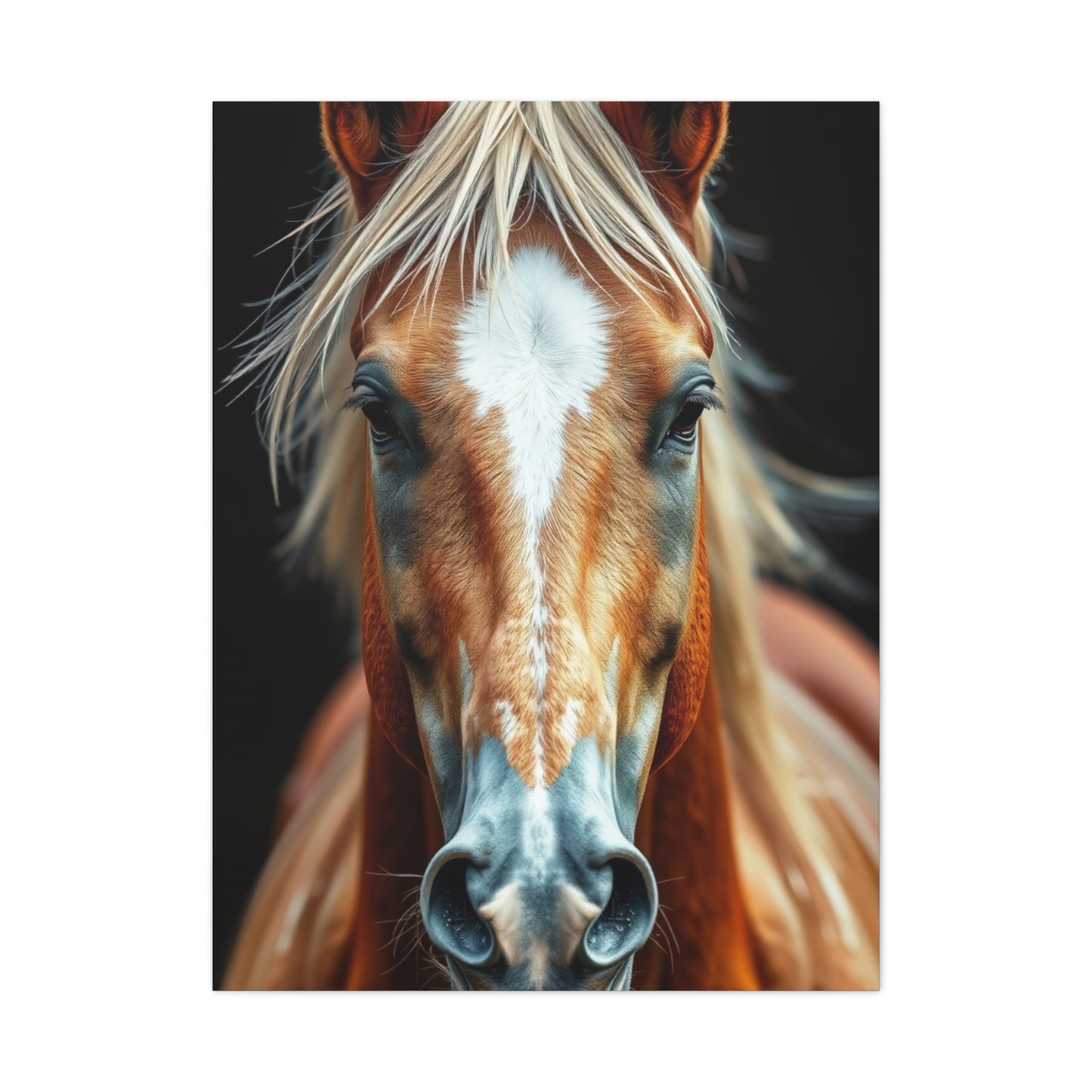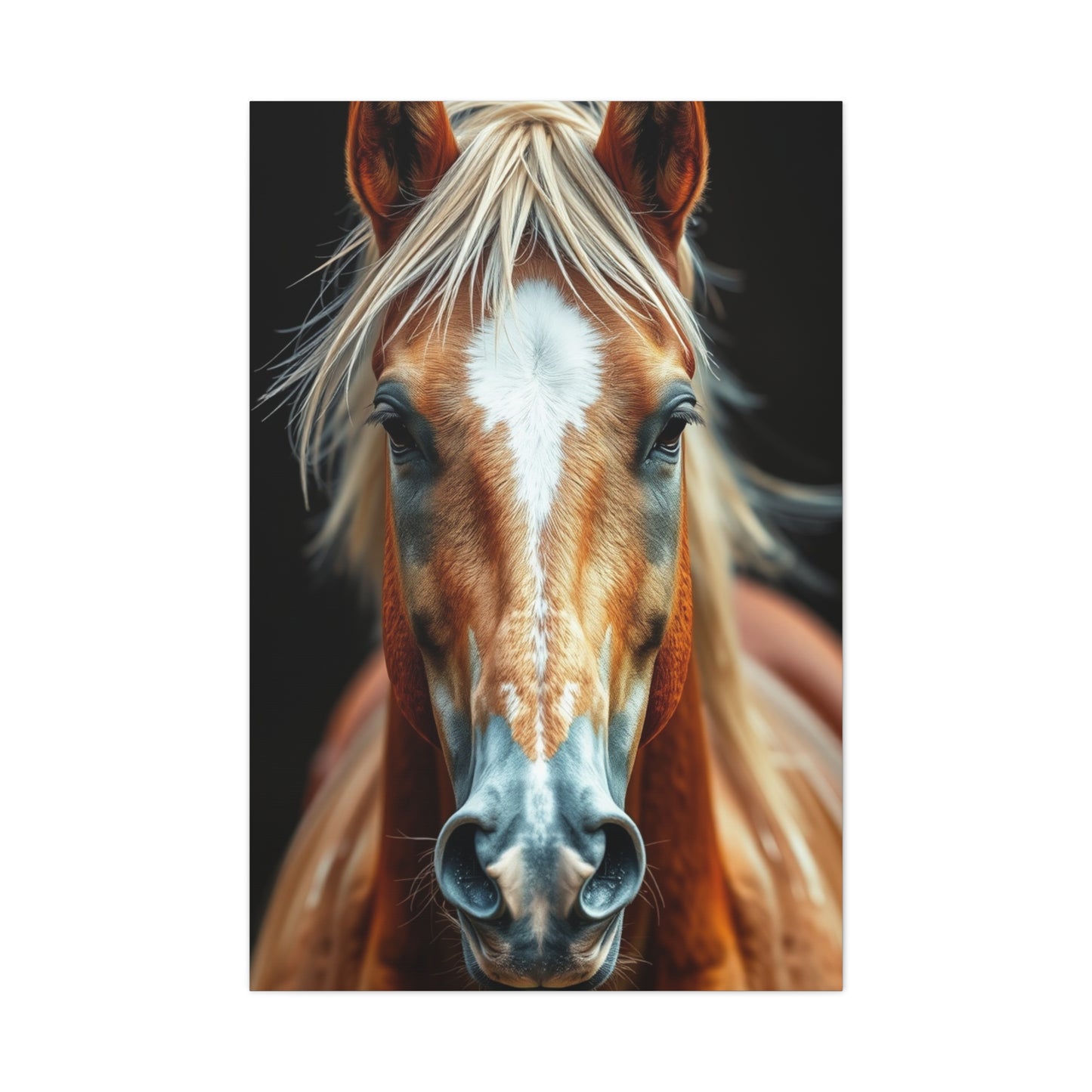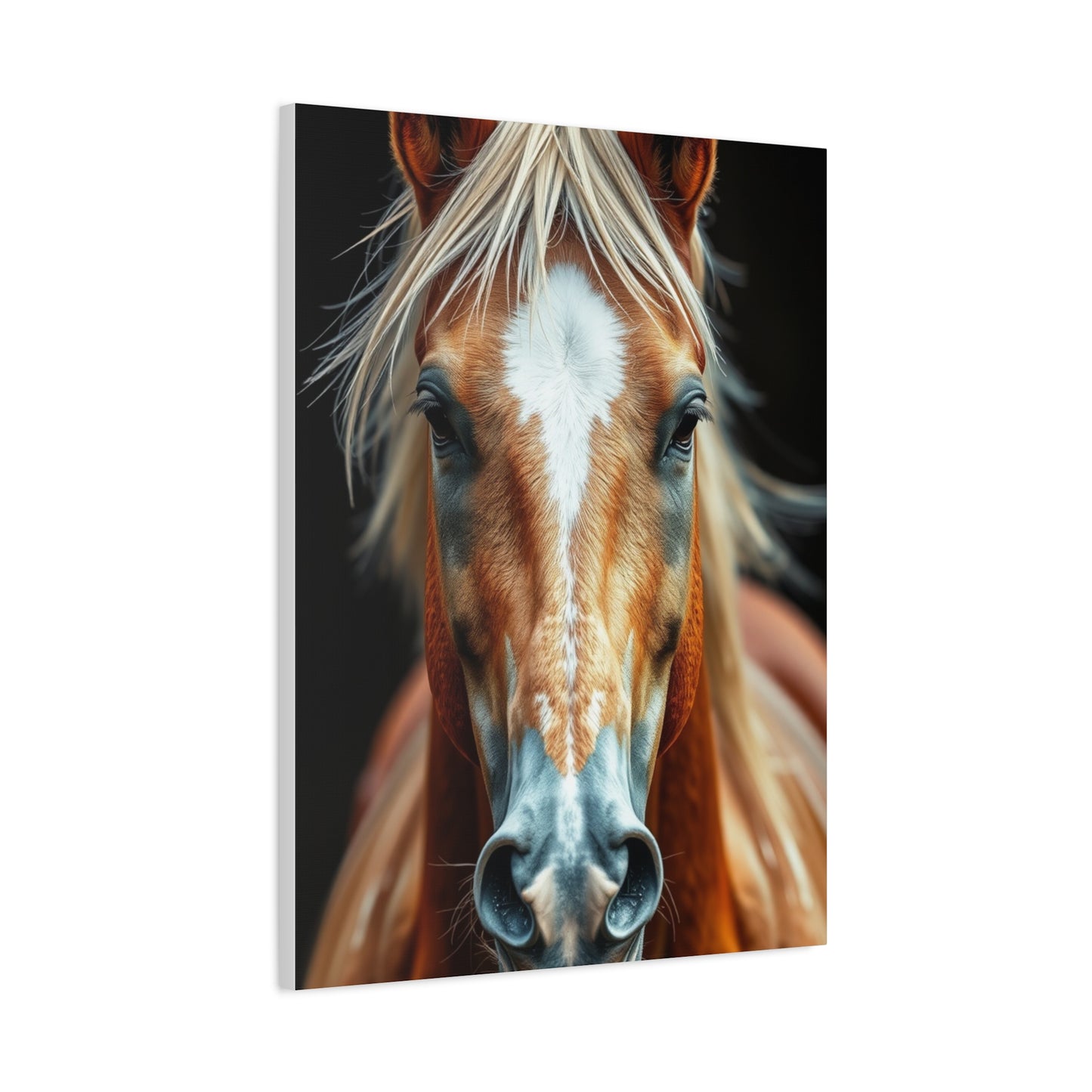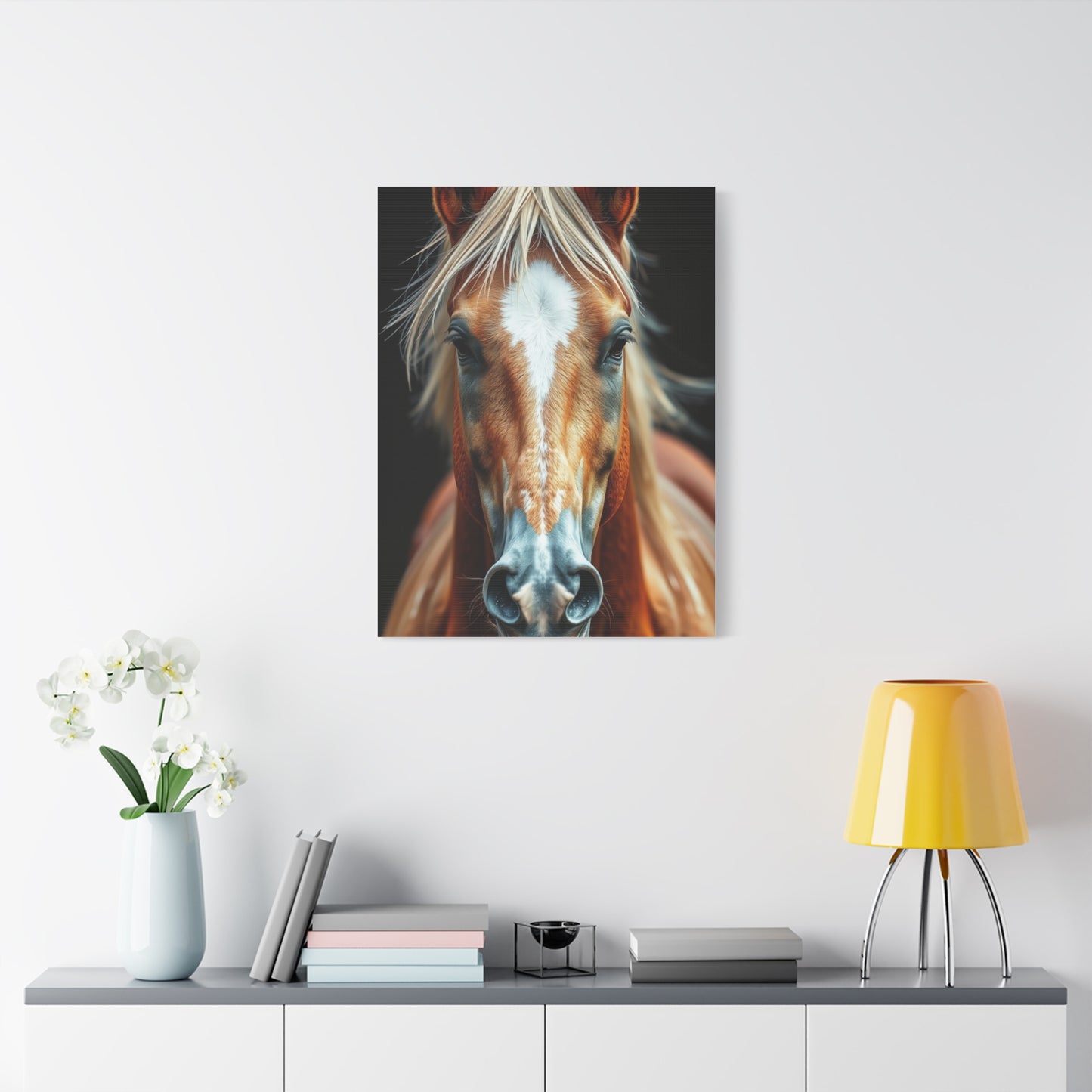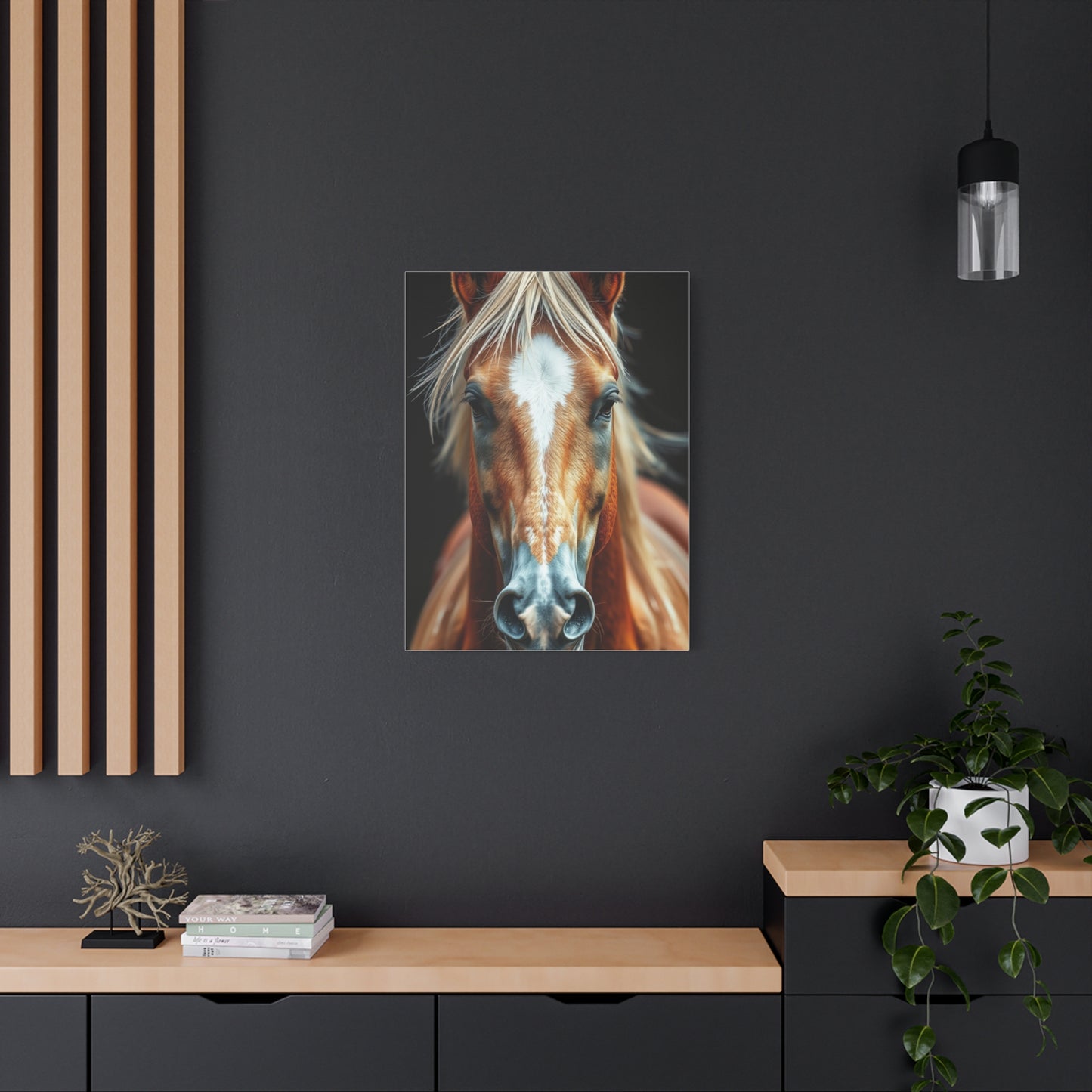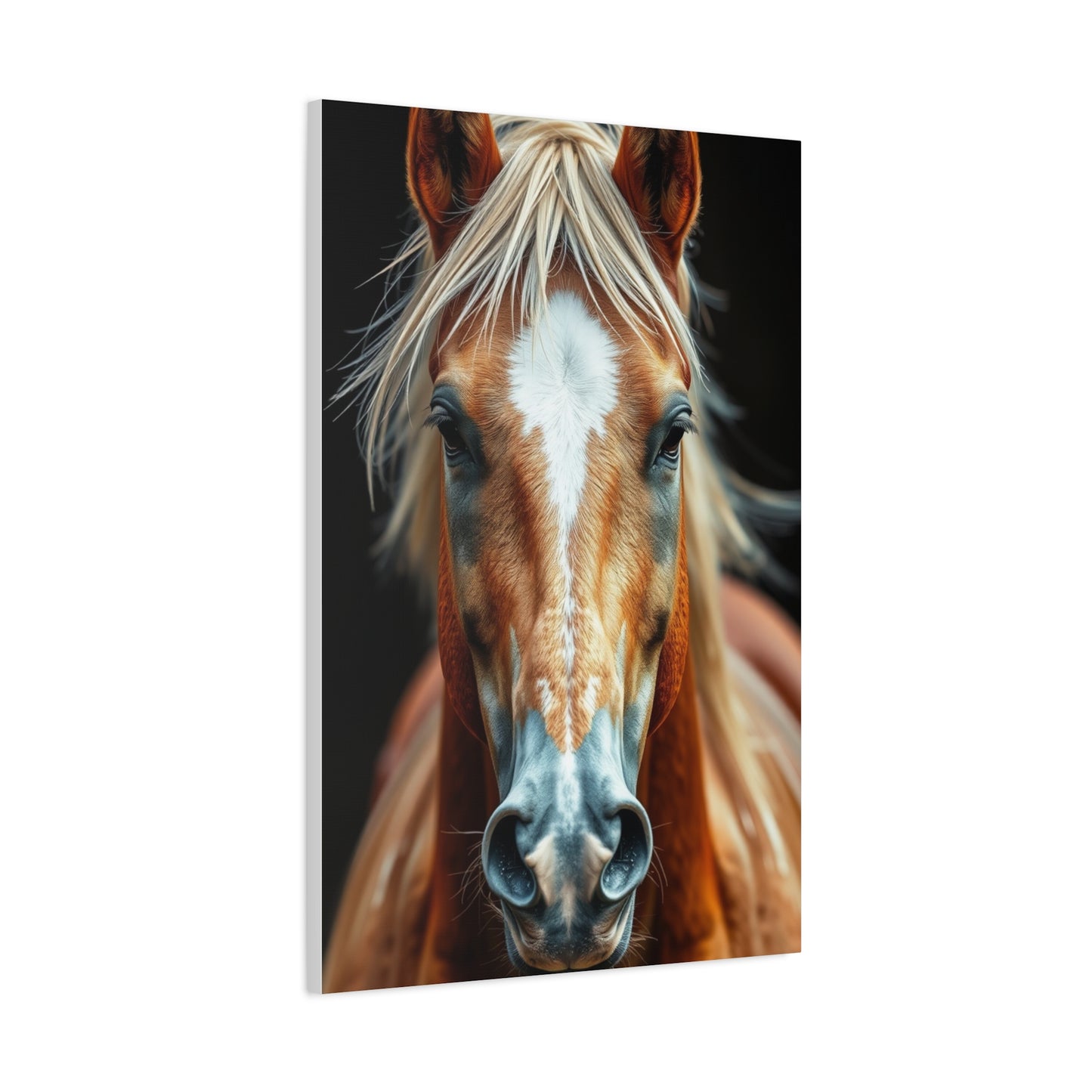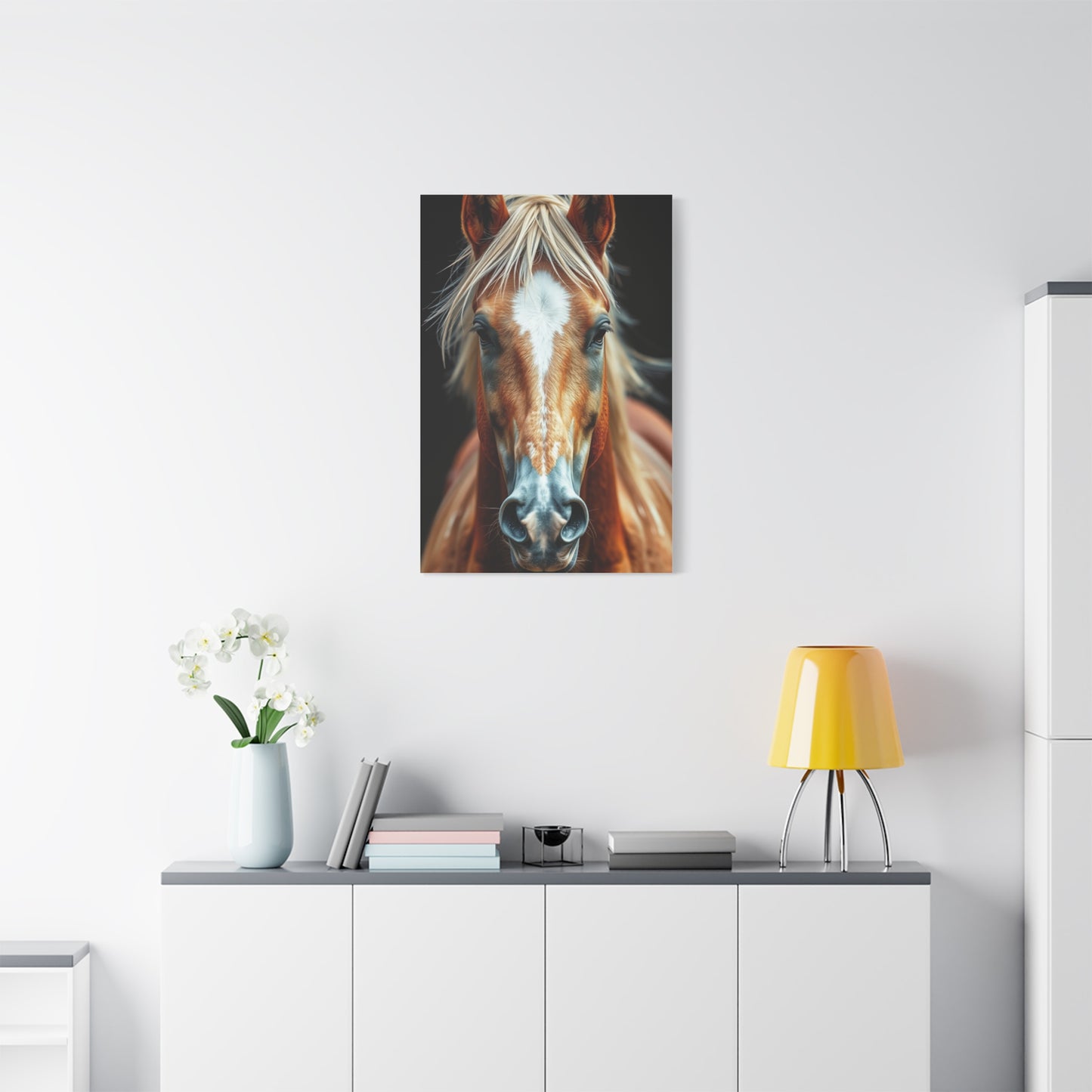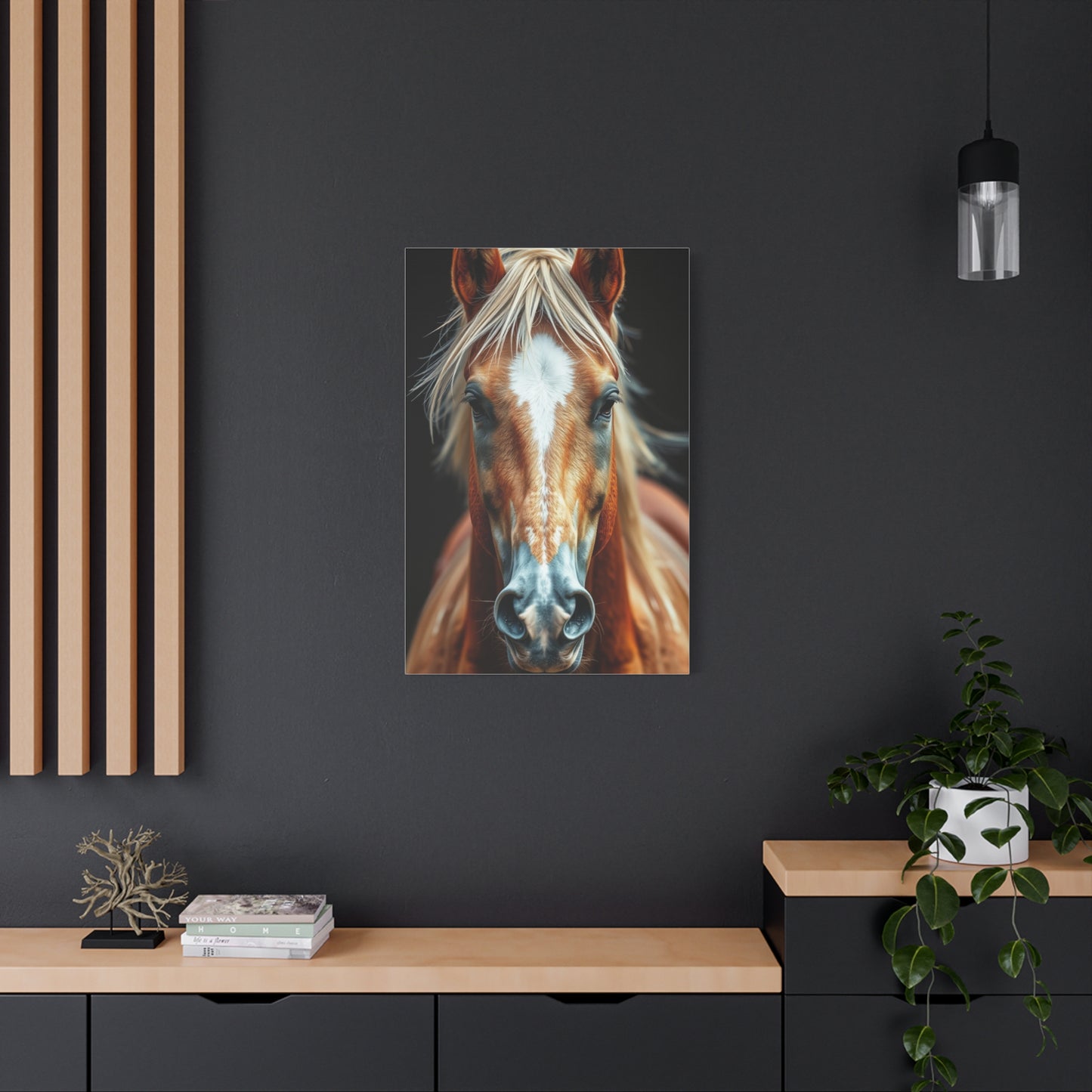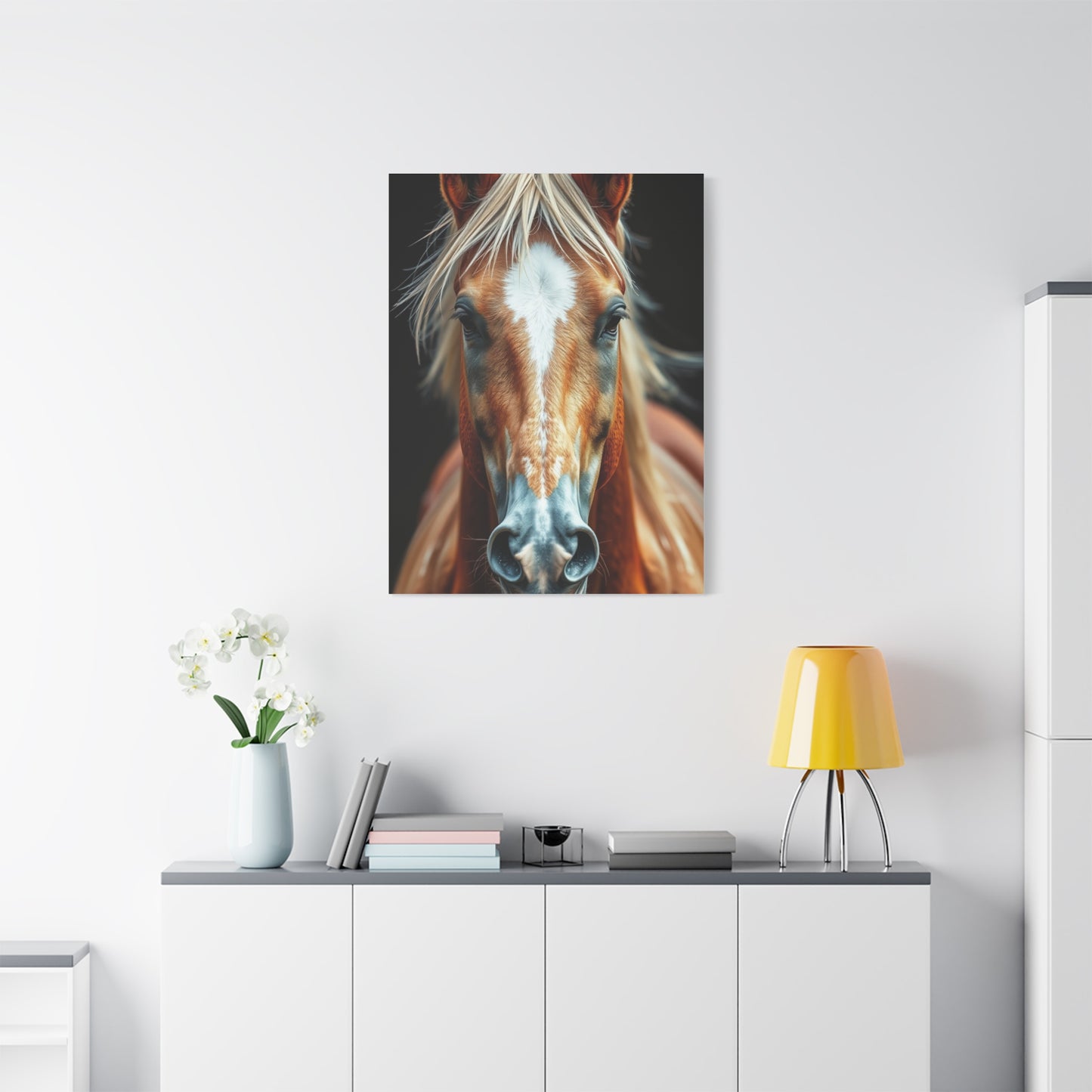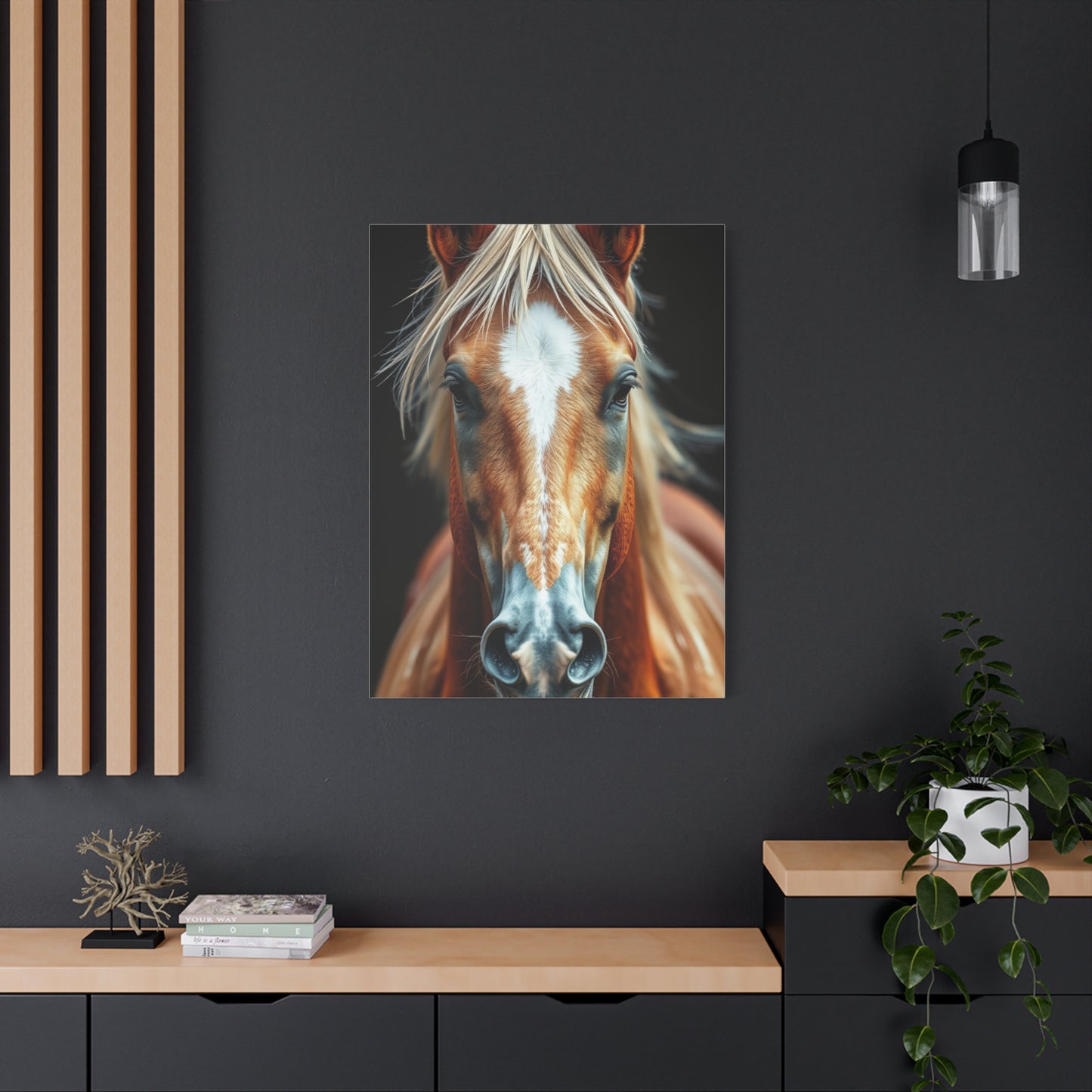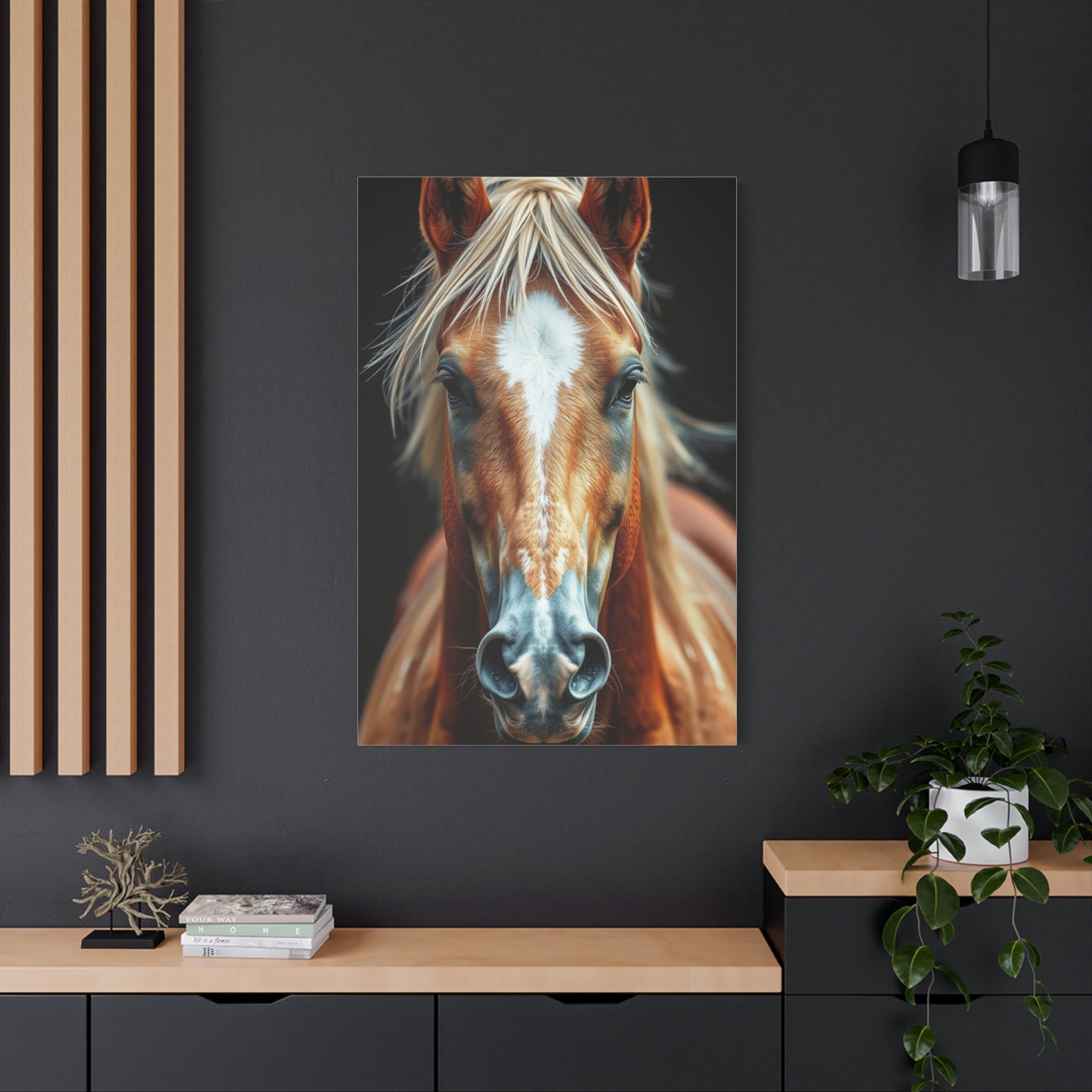The Grace of the Horse: How Equestrian Elegance Wall Art Captures Movement and Spirit
The world of interior design has long celebrated the magnificence and grace of horses through artistic expression. Bringing equestrian-themed artwork into your living spaces creates an atmosphere of refined sophistication while honoring the timeless bond between humans and these majestic creatures. From contemporary interpretations to classic representations, horse-inspired artwork offers endless possibilities for transforming ordinary walls into captivating visual experiences that speak to both the heart and the aesthetic sensibilities of discerning homeowners.
The appeal of equine artwork transcends mere decoration, connecting us to centuries of cultural heritage where horses symbolized power, freedom, and nobility. Today's interior designers and art enthusiasts continue to embrace this tradition, incorporating equestrian themes into diverse design schemes that range from ultra-modern minimalist spaces to warmly inviting country estates. Whether you're drawn to the dynamic energy of a galloping stallion captured mid-stride or the serene beauty of a horse standing peacefully in a meadow, the right piece of equestrian artwork can become the defining element that ties together your entire decorating vision.
Understanding how to select, place, and style horse-themed artwork requires consideration of multiple factors including color schemes, spatial dynamics, existing furnishings, and personal aesthetic preferences. This comprehensive exploration delves into every aspect of incorporating equestrian elegance into your home, offering detailed insights into various styles, placement strategies, and design approaches that will help you create spaces that resonate with beauty, strength, and timeless appeal.
Eternal Beauty: Equine Artistry on Printed Fabric
The concept of capturing equestrian beauty on printed fabric represents a marriage of traditional subject matter with contemporary printing technology. This approach to horse-themed artwork offers remarkable versatility, allowing homeowners to introduce the grace and power of horses into their spaces through high-quality reproductions that maintain visual impact while remaining accessible to a broader audience. The printed fabric medium provides texture and depth that flat paper prints cannot achieve, creating a more substantial presence on the wall that commands attention without overwhelming the space.
When considering equine artistry on printed fabric, the quality of both the image and the material becomes paramount. Premium fabrics stretched over substantial frames create a gallery-worthy presentation that elevates the artwork from simple decoration to a genuine focal point. The texture of the fabric adds an additional dimension to the image, creating subtle variations in light reflection that bring the artwork to life as natural illumination changes throughout the day. This dynamic quality ensures that the piece continues to engage viewers over time rather than becoming invisible through familiarity.
The selection process for equine artwork on fabric should begin with careful consideration of the image itself. Look for photographs or paintings that capture authentic moments of equestrian beauty rather than staged or overly processed compositions. Images that showcase the natural athleticism of horses, whether in motion or at rest, tend to create more powerful emotional connections with viewers. The play of light across the horse's musculature, the intensity in its eyes, or the flowing movement of its mane and tail all contribute to creating artwork that feels alive and present rather than static and decorative.
Color palette considerations play a crucial role in determining how well equine artwork will integrate into your existing design scheme. While dramatic black and white compositions offer timeless sophistication, color images can introduce warmth, energy, or calm depending on the tones present in the photograph or painting. Sepia-toned pieces evoke vintage charm and historical connection, while full-color contemporary images bring vibrancy and immediacy to the space. Consider how the dominant colors in your chosen artwork will interact with existing wall colors, furniture upholstery, and accent pieces to create either harmonious coordination or intentional contrast.
Scale represents another critical factor in the successful incorporation of equine artwork on fabric. Oversized pieces make bold statements and work exceptionally well in spaces with high ceilings or extensive wall areas that might otherwise feel empty or underutilized. These large-scale works can anchor an entire room, providing a visual foundation around which other design elements can be arranged. Conversely, smaller pieces offer opportunities for creating gallery walls or groupings that tell more complex visual stories through multiple related images.
Equine-Themed Artwork: Ideas for Decorating with Horse Imagery
Developing a cohesive approach to incorporating equine-themed artwork throughout your home requires thoughtful planning and an understanding of how different spaces function and feel. Horse imagery offers remarkable versatility, adapting to various design styles from formal traditional to relaxed contemporary, making it suitable for nearly any room in the house. The key lies in selecting pieces that complement the specific character and purpose of each space while maintaining a thread of visual continuity that ties the overall design together.
Living rooms present ideal opportunities for showcasing equestrian artwork as primary focal points that set the tone for the entire home. These gathering spaces benefit from larger, more dramatic pieces that can hold their own against furniture groupings and command attention from multiple viewing angles. Consider positioning a substantial horse portrait or action shot above the sofa, where it becomes the natural visual anchor for the seating arrangement. The scale should be proportional to the furniture below it, generally spanning two-thirds to three-quarters of the sofa width to create balanced visual weight without overwhelming the space.
Dining rooms offer another excellent venue for equestrian artwork, particularly pieces that convey elegance and refinement appropriate to the formality of shared meals and entertaining. Horizontal compositions work especially well in dining spaces, complementing the linear nature of dining tables while providing visual interest that enhances the dining experience without competing for attention during meals. Consider images that capture horses in peaceful, graceful moments rather than high-energy action shots, as the calmer mood better suits the contemplative nature of dining together.
Bedroom spaces call for more serene and contemplative equestrian imagery that promotes relaxation and peaceful rest rather than stimulation and energy. Soft-focused images of horses in natural settings, close-up portraits that emphasize gentle expressions, or atmospheric pieces featuring horses in misty fields or golden-hour light all contribute to the restful ambiance essential for sleeping quarters. Placement above the headboard creates a focal point visible upon entering the room, while positioning artwork opposite the bed provides something beautiful to contemplate while resting.
Home offices and studies benefit from equestrian artwork that inspires focus, determination, and strength of purpose. Images of horses in training, competitive situations, or demonstrating athletic prowess can serve as visual metaphors for personal and professional goals. The discipline and partnership inherent in equestrian pursuits resonate with professional environments, reminding us of the value of dedication, practice, and the relationship between effort and achievement. Choose pieces with clean compositions and strong visual clarity that maintain their impact even during brief glances during busy workdays.
Entryways and hallways, often overlooked in decorating schemes, provide excellent opportunities for creating impactful first impressions with equestrian artwork. These transitional spaces typically feature wall areas that benefit from vertical or square compositions that work within narrower dimensions. A striking horse portrait in an entryway immediately establishes the aesthetic tone for the entire home, signaling to visitors that they're entering a space where beauty, elegance, and thoughtful design are valued. Hallway galleries featuring multiple smaller equestrian pieces create visual interest in otherwise utilitarian spaces while providing a sense of journey and discovery as one moves through the home.
Grand Movement: Refined Equine Artwork on Fabric
The concept of capturing horses in motion represents one of the most challenging and rewarding subjects in equestrian artwork. Movement conveys the essential nature of these powerful animals, showcasing their athletic ability, grace under exertion, and the dynamic energy that has captivated humans for millennia. When successfully translated to fabric printing, these action-oriented images bring incredible vitality to interior spaces, creating focal points that seem to pulse with life and energy even as they remain perfectly still on the wall.
Selecting images that effectively capture equestrian motion requires an understanding of what makes such photographs or paintings successful. The best action shots freeze a decisive moment that suggests both what came before and what will follow, creating narrative tension that engages viewers' imaginations. A horse captured mid-leap over a jump, for instance, contains the entire story of approach, suspension, and landing within a single frame. The extended limbs, focused expression, and suspended moment create drama that static poses simply cannot achieve.
The technical quality of motion-based equestrian artwork becomes especially critical, as any blurring or lack of sharpness that might be acceptable in static images undermines the impact of action shots. Look for images with crisp detail, particularly in the horse's eyes and face, as these elements create emotional connection even in dynamic compositions. The background should complement rather than compete with the primary subject, often featuring attractive blur that emphasizes speed and motion while keeping attention focused on the horse itself.
Compositional elements in motion-based equestrian artwork guide the viewer's eye and create visual flow that reinforces the sense of movement. Diagonal lines convey energy and dynamism more effectively than horizontal or vertical arrangements. A horse galloping across the frame from lower left to upper right, for example, creates upward momentum that feels optimistic and powerful. The amount of space in front of the horse, often called leading space, allows the viewer's eye to follow the implied trajectory, preventing the composition from feeling cramped or stopped.
Color treatment in motion-based equestrian fabric prints significantly affects the overall mood and energy of the piece. Bold, saturated colors emphasize vitality and power, making such pieces ideal for contemporary spaces or areas where stimulation and energy are desired. Alternatively, desaturated or monochromatic treatments can create sophisticated, almost sculptural qualities that emphasize form and movement while reducing visual noise. Consider how the color treatment aligns with your overall design goals and the emotional atmosphere you wish to create in the space.
The scale of motion-based equestrian artwork should be generous enough to convey the power and drama of the captured moment. These dynamic images often lose impact when reproduced too small, as the details and energy that make them compelling become difficult to appreciate. Larger formats allow viewers to perceive the musculature in motion, the tension in the horse's body, and the fine details like flying mane and tail that enhance the sense of movement. In spaces with adequate wall area, consider oversized presentations that create immersive experiences rather than merely decorative accents.
Framing choices for motion-based equestrian fabric prints should enhance rather than constrain the dynamic energy of the image. Frameless gallery wraps work particularly well, as they avoid creating visual boundaries that might seem to contain or limit the movement captured in the image. If traditional framing is preferred, select simple, clean-lined frames that direct attention to the artwork itself rather than competing for visual prominence. The frame should feel like a launching point rather than a cage, complementing the sense of freedom and power inherent in the image.
Focal Point Artwork: Equine Art for Central Living Areas
Establishing powerful focal points within living areas requires artwork that commands attention while remaining livable enough for daily enjoyment. Equestrian pieces excel in this role, offering visual weight and interest without the potentially jarring impact of abstract or provocative contemporary art. The inherent beauty and familiarity of horses as subjects create accessible focal points that appeal to diverse tastes while providing sufficient depth and complexity to sustain interest over time.
The selection process for focal point equestrian artwork should begin with careful analysis of the space itself, including dimensions, existing color palette, furniture arrangement, and architectural features. Large-scale pieces work best in spacious rooms with substantial wall areas, where they can be viewed from adequate distances that allow appreciation of the full composition. Measure wall spaces carefully and consider how furniture placement will affect viewing angles, ensuring the artwork will be visible and appreciated from primary seating areas.
Subject matter for focal point pieces should reflect the overall character and purpose of the living area. Formal living rooms might call for dignified portraits of distinguished horse breeds or classical representations that emphasize beauty and nobility. Family rooms with more relaxed, casual atmospheres can accommodate livelier, more energetic depictions showing horses at play or in natural settings. Consider the emotional tone you wish to establish in the space and select imagery that reinforces rather than contradicts that atmosphere.
Artistic style significantly impacts how equestrian focal point pieces integrate with existing design elements. Photorealistic images create one type of presence, offering detailed representation that emphasizes the physical reality of horses. Impressionistic or artistic interpretations provide different qualities, introducing painter's techniques and subjective vision that can feel more like fine art than decorative photography. Abstract or stylized representations offer contemporary edge while maintaining recognizable equestrian themes. Your choice should align with your personal aesthetic preferences and the overall design language of your home.
Color harmony between focal point artwork and existing room elements creates cohesive, professional-looking results. You need not match colors exactly; in fact, perfect matching often appears contrived and lifeless. Instead, look for artwork that shares undertones with existing pieces or that introduces complementary colors that enhance your established palette. A room dominated by cool blues and grays might be beautifully enhanced by equestrian artwork featuring warm browns and golds, creating visual interest through controlled contrast rather than jarring conflict.
Traditional Refinement: Equine Wall Art with Classic Appeal
The enduring popularity of classical equestrian wall art speaks to humanity's long relationship with horses and the timeless qualities these animals represent. Traditional approaches to depicting horses draw on centuries of artistic convention, from formal sporting portraits to pastoral scenes that celebrate horses in natural contexts. These classical treatments offer sophisticated beauty that works particularly well in homes where traditional design elements predominate, though they can also provide appealing contrast in more contemporary settings.
Understanding the historical context of traditional equestrian art enhances appreciation for contemporary pieces that draw on these established conventions. English sporting art, for instance, developed elaborate techniques for portraying horses with anatomical accuracy while emphasizing their noble bearing and importance to their owners. These formal portraits often positioned horses in three-quarter view against parkland or stable backgrounds, creating compositions that celebrated both the animal and the lifestyle it represented. Modern pieces that reference this tradition carry forward its sense of prestige and refinement.
The color palettes typical of traditional equestrian art tend toward naturalistic earth tones, with rich browns, deep greens, and warm golds predominating. These harmonious, understated colors create restful, sophisticated atmospheres that work beautifully in formal living areas, libraries, home offices, and traditional dining rooms. The lack of jarring or highly saturated colors ensures these pieces remain visually comfortable over extended periods, never overwhelming the space or demanding constant attention in ways that might become tiresome.
Subject selection within traditional equestrian art often focuses on particular breeds known for their beauty, nobility, or historical significance. Thoroughbreds, Arabians, and various European warmblood breeds frequently appear in classical treatments due to their refined features and association with prestigious equestrian pursuits. The depiction emphasizes correct conformation, proud bearing, and the quality that made these breeds valuable and admired. Modern traditional pieces may expand to include other breeds while maintaining the dignified, respectful approach characteristic of the genre.
Multiple Dimensions: Equine Artwork with Complex Surface Treatment
The introduction of dimensional elements and complex surface treatments in equestrian artwork creates depth and tactile interest that flat prints cannot achieve. These layered approaches range from heavy impasto painting techniques that build up physical texture to mixed media pieces incorporating various materials and finishes. The resulting depth engages viewers on multiple levels, inviting closer inspection while creating dramatic visual presence even from a distance.
Understanding the techniques used to create textured equestrian artwork enhances appreciation for these pieces and informs selection decisions. Traditional oil painting with heavy impasto technique applies paint in thick layers that catch and reflect light in constantly changing ways as viewing angles and illumination shift. This approach creates almost sculptural quality, with brushstrokes becoming visible three-dimensional elements that add expressiveness and energy to the image. The tactile quality of heavily textured painting invites interaction, though of course the work should be protected from actual touching that might cause damage.
Mixed media approaches to equestrian artwork incorporate diverse materials beyond traditional painting mediums. Artists might combine acrylics with materials like metal leaf, fabric, sand, or paper to create complex surfaces that reference both the visual and physical nature of horses. A mixed media piece might use actual horsehair, for instance, creating direct material connection to the subject while adding unexpected textural interest. These innovative approaches appeal to collectors seeking unique pieces that transcend conventional decorating boundaries.
Digital printing technology has evolved to reproduce textured surfaces with remarkable fidelity, making layered equestrian artwork more accessible to broader audiences. Gel medium applications over high-quality prints create dimensional effects that approximate original paintings at a fraction of the cost. While not identical to hand-painted works, these enhanced prints offer significant visual and tactile interest beyond standard flat printing. They represent an excellent middle ground for those who appreciate texture but cannot afford or access original painted works.
Contemporary Country: Equine Art for Today's Rural-Inspired Interiors
The modern rustic aesthetic has gained tremendous popularity in recent years, blending the warmth and authenticity of country living with the clean lines and edited approach of contemporary design. Equestrian artwork fits naturally within this design framework, offering subject matter deeply connected to rural life and agricultural heritage while adapting to current aesthetic sensibilities. The key lies in selecting and presenting horse imagery in ways that feel fresh and current rather than dated or clichéd.
Characteristics of modern rustic equestrian artwork typically include simplified compositions that avoid fussy detail, natural color palettes emphasizing earth tones and muted hues, and presentation styles that eschew ornate framing in favor of clean, minimal approaches. The imagery itself might reference traditional equestrian subjects but through contemporary photographic or artistic techniques that create distance from overly literal or nostalgic treatments. The result feels grounded in authentic rural experience while speaking to current design sensibilities.
Material choices in modern rustic settings provide opportunities for creative presentation of equestrian artwork. Consider mounting images on reclaimed wood panels, creating mixed media pieces that combine photography or printing with authentic barn wood, weathered fence boards, or other materials carrying agricultural associations. These material choices create literal connections between the artwork and rural heritage while introducing textural variety that enhances visual interest. The rough, authentic quality of reclaimed materials provides appealing contrast to refined equestrian imagery.
Color palette selection for equestrian artwork in modern rustic interiors should emphasize natural, unsaturated hues that coordinate with the materials and colors typical of this aesthetic. Think weathered grays, soft browns, muted greens, and warm creams rather than bright, saturated colors that might feel jarring in these thoughtfully subdued environments. Black and white photography works exceptionally well in modern rustic settings, providing graphic impact while maintaining the tonal restraint characteristic of the style.
Peaceful Strength: Equine Artwork for Private Retreats
Bedroom spaces require special consideration when selecting artwork, as these private retreats serve as sanctuaries from the demands and stimulation of daily life. Equestrian imagery for sleeping quarters should emphasize the calming, contemplative qualities of horses rather than their dynamic energy, creating atmospheres conducive to relaxation, reflection, and restorative rest. The gentle power horses embody when at peace offers perfect symbolic resonance for spaces dedicated to renewal and quiet.
Selecting equestrian artwork for bedrooms begins with considering the emotional tone most conducive to rest and relaxation. Images of horses in tranquil settings like misty meadows at dawn, peaceful grazing in golden afternoon light, or quiet moments of connection between horses and handlers all convey serenity appropriate for sleeping spaces. Avoid action-oriented imagery showing horses in competition, training, or other high-energy situations that might stimulate rather than soothe. The goal is creating visual environments that lower stress levels and encourage the mental quieting necessary for quality sleep.
Color considerations for bedroom equestrian artwork lean heavily toward soft, muted palettes that promote calm rather than excitement. Cool blues and grays suggest tranquility and peace, while warm earth tones create cozy, secure feelings. Avoid highly saturated colors or stark contrasts that might prove visually stimulating when you're trying to wind down for sleep. Monochromatic treatments or limited color palettes often work especially well in bedroom applications, creating sophisticated restraint that never overwhelms the senses.
The subject matter within equestrian bedroom artwork can emphasize individual horses in contemplative moments rather than group scenes or active situations. Close-up portraits that capture the gentle, intelligent expression in a horse's eyes create intimate connection without demanding energy or attention. The quiet dignity of a horse at rest reminds us that strength and power need not always be demonstrated through action, that there is profound beauty in stillness and contemplation. These qualities align perfectly with the bedroom's function as a space for restoration.
Placement of equestrian artwork in bedrooms typically centers around the headboard wall, where it becomes the room's visual focal point visible upon entry. This positioning also ensures the artwork remains visible during waking hours while lying in bed, providing something beautiful and calming to contemplate during quiet moments. Alternative placements on walls opposite the bed or flanking windows can work well in layouts where the headboard wall is not suitable. Consider sight lines from various positions within the room to ensure the artwork can be appreciated from multiple vantage points.
Striking Presentations: Equine Wall Art Design Concepts
Creating truly memorable equestrian wall presentations requires moving beyond simple hanging of a single piece to consider more complex, intentional design approaches. Bold statement walls featuring horse imagery can transform entire rooms, establishing immediate visual impact that defines the space's character and creates lasting impressions. These ambitious approaches demand confidence and commitment but deliver dramatic results that elevate interiors from pleasant to exceptional.
Gallery wall arrangements featuring multiple equestrian pieces allow for complex storytelling and visual interest impossible with single artworks. Successful gallery walls balance similarity with variation, creating cohesive collections where pieces relate to each other while maintaining individual interest. You might group images by color palette while varying composition, or maintain consistent subject matter across different artistic styles. The arrangement itself becomes part of the artistic statement, with spacing, alignment, and overall configuration contributing to the effect.
Asymmetrical gallery wall layouts create dynamic, contemporary presentations that feel organic and collected rather than rigidly structured. This approach allows incorporation of pieces in various sizes, mixing larger anchor pieces with smaller supporting images. Begin with the largest or most significant piece, positioning it slightly off-center at comfortable viewing height. Build out from this anchor, adding pieces that balance visual weight without creating perfect symmetry. The overall outline of the arrangement might form irregular shapes that add interest while maintaining cohesion through consistent spacing and thoughtful placement.
Symmetrical gallery arrangements offer more formal, traditional presentations appropriate for classic interiors or spaces where order and balance are priorities. Grid patterns with evenly sized and spaced pieces create orderly, impactful presentations that work particularly well in formal living rooms, dining rooms, or office spaces. Symmetrical arrangements can also feature a large central piece flanked by matched pairs of smaller images, creating hierarchical compositions with clear focal points. This approach provides visual calm and predictability that some spaces require.
Vertical stacking of equestrian artwork creates dramatic impact in spaces with limited horizontal wall area but adequate vertical dimension. This approach works especially well in entryways, hallways, or alongside staircases where wall height exceeds width. Three pieces stacked vertically, for instance, draw the eye upward while making efficient use of narrow wall space. Ensure adequate spacing between pieces, typically 3 to 6 inches depending on the scale of the works and the height of the wall. Vertical arrangements create uplifting energy while providing substantial visual presence in challenging spaces.
Creative Movement: Equine Artistry in Print Form
The artistic interpretation of horses in printed form offers remarkable diversity, ranging from photorealistic representation to highly stylized abstraction. Understanding the spectrum of artistic approaches available helps in selecting pieces that align with personal aesthetic preferences while serving specific design goals. Each artistic style brings different qualities and associations, influencing how the artwork functions within interior spaces and the emotional responses it generates.
Photographic realism in equestrian printing captures horses with exceptional detail and accuracy, celebrating the physical beauty and presence of these animals through technical mastery. These highly detailed images showcase the texture of coats, the expressiveness of eyes, the play of light across muscular forms, and the environmental contexts in which horses live and work. Photorealistic prints appeal to those who value authenticity and want to bring the actual presence of horses into their homes as faithfully as possible. The technical excellence required to create truly exceptional equestrian photography makes these pieces impressive achievements that reward close viewing.
Impressionistic approaches to equestrian printing prioritize mood, atmosphere, and emotional impact over detailed accuracy. These pieces capture the essence of horses through color, light, and painterly technique rather than precise representation. Brushstrokes remain visible, edges soften, and details dissolve into suggestions, creating dreamlike qualities that evoke feelings rather than documenting facts. Impressionistic equestrian prints work beautifully in spaces where romantic, emotional atmospheres are desired, bringing artistic sensibility that transcends mere decoration.
Abstract equestrian artwork distills horses to essential forms, colors, and gestures, creating pieces that reference their subjects while departing significantly from realistic representation. These artworks might reduce horses to geometric shapes, energetic lines, or color relationships that suggest rather than depict. Abstract approaches appeal to those seeking contemporary art that maintains equestrian connections while avoiding literal representation. These pieces often integrate more successfully with modern interiors where photorealistic imagery might feel incongruous.
Watercolor techniques in equestrian printing create soft, fluid effects particularly suited to capturing movement and grace. The transparent, flowing quality of watercolor naturally complements subject matter involving motion and athleticism. Watercolor-based prints tend to feel lighter and more ethereal than oils or acrylics, bringing gentle presence appropriate for spaces where subtlety is valued over bold statement. The unpredictability inherent in watercolor technique often results in unique variations that add to each piece's individual character.
Sophisticated Displays: Equine Wall Art in Curated Arrangements
Creating gallery-quality presentations of equestrian artwork within residential settings brings museum-level sophistication to everyday living spaces. This curated approach transforms casual decoration into intentional artistic display, elevating both the artwork and the environment. While professional expertise certainly helps, homeowners can apply fundamental principles to create impressive results that demonstrate refined taste and attention to design details that distinguish exceptional interiors from merely adequate ones.
Museum-quality spacing between artworks creates breathing room that allows each piece to be appreciated individually while contributing to the overall composition. Professional galleries typically allow 3 to 6 inches between pieces, with exact spacing determined by the scale of the works and the overall dimensions of the wall. Consistent spacing throughout a multi-piece arrangement creates visual rhythm and professional polish. Use templates or careful measurement to ensure uniform gaps, as even slight inconsistencies become apparent in finished installations and undermine the curated quality you're seeking.
Hanging systems used in professional galleries offer practical advantages for residential applications, particularly when frequently changing or adjusting artwork. Picture rail systems with adjustable cables allow repositioning without creating new holes in walls, providing flexibility while maintaining clean, professional presentation. These systems work particularly well for serious collectors who rotate pieces seasonally or acquire new works regularly. The minimal visual presence of quality hanging hardware keeps attention focused on the artwork itself rather than its mounting mechanisms.
Consistent framing across multiple equestrian pieces creates unified collections even when the artwork itself varies in subject, style, or color. Selecting a single frame style and finish for an entire gallery wall or room ensures visual cohesion while allowing the images themselves to provide variety and interest. This approach particularly suits photographic collections where the photographer's vision and subject matter supply sufficient variation without needing different frame treatments. The resulting unity creates professional, curated appearance impossible with mismatched framing.
Mat selection and treatment significantly impacts the gallery-quality appearance of framed equestrian artwork. Professional matting using archival materials in appropriate colors creates visual breathing room while protecting the artwork from contact with glazing. Mat width should relate proportionally to both the artwork size and frame dimensions, with larger pieces generally requiring more generous matting. Museum-quality presentation often employs wider mats than typical commercial framing, creating the substantial, valuable appearance associated with serious art.
Understated Refinement: Equine Art in Simplified Settings
Minimalist design philosophy emphasizes intentionality, restraint, and the elimination of excess in favor of carefully chosen elements that truly matter. Equestrian artwork can function beautifully within minimalist frameworks when selected and presented with appropriate consideration for the aesthetic's core values. The challenge lies in allowing the artwork sufficient presence to justify its inclusion while avoiding visual clutter or thematic heaviness that contradicts minimalist principles.
Selection criteria for equestrian artwork in minimalist spaces prioritize clean compositions, restrained color palettes, and subjects that convey grace and simplicity rather than complexity or frenetic energy. A single horse portrayed in simple, uncluttered settings works better than crowded scenes or busy compositions. Negative space within the image itself becomes as important as the horse, creating visual breathing room that aligns with minimalist values. The artwork should feel like the distillation of equestrian beauty to its essence rather than an exhaustive representation.
Monochromatic equestrian artwork particularly suits minimalist environments, offering sophistication and graphic impact without the visual complexity of multiple colors. Black and white photography eliminates color as a variable, focusing attention on form, light, composition, and subject. Sepia or single-color variations provide subtle warmth while maintaining the visual simplicity that minimalism requires. These color-limited approaches ensure the artwork integrates seamlessly with minimalist interiors typically characterized by neutral palettes and limited color variation.
Presentation style for equestrian artwork in minimalist spaces must embrace simplicity and clean lines. Frameless gallery wraps work exceptionally well, eliminating the additional visual element that traditional frames introduce. If framing is desired, select the thinnest, simplest frames possible in materials and finishes that complement the space without demanding attention. White or natural wood frames in minimal profiles provide necessary structure while respecting minimalist aesthetics. Avoid ornate, heavy, or decorative framing that contradicts the fundamental simplicity minimalism requires.
Singular pieces rather than collections typically work best in minimalist settings, where the philosophy of less is more applies directly to artwork selection and display. Choose one exceptional equestrian piece that truly speaks to you rather than multiple adequate pieces. This singular focus creates powerful presence while maintaining the uncluttered quality essential to minimalist success. The chosen piece becomes more significant through its solitary position, garnering full attention without competition from surrounding artwork.
Energetic Interpretation: Equine Art for Updated Interiors
Contemporary interior design embraces clean lines, innovative materials, and forward-looking aesthetic sensibilities that distinguish current spaces from both traditional and transitional approaches. Equestrian artwork successfully integrates into contemporary interiors when selected and presented with attention to how the pieces align with or purposefully contrast against the modern design language. The key lies in finding the balance between honoring the inherent nature of the equestrian subject and adapting presentation to suit contemporary tastes and spatial requirements.
Photographic approaches to equestrian subjects often work exceptionally well in contemporary settings, offering the crispness, clarity, and technical precision that align with modern aesthetic values. High-resolution images printed at substantial scale create impressive presence while maintaining the clean, uncluttered quality contemporary design demands. Look for photographs with strong composition, excellent technical execution, and subjects that showcase the beauty and athleticism of horses without excessive sentimentality or nostalgia that might feel dated or traditional.
Abstract and artistic interpretations of equestrian themes provide opportunities for introducing horse imagery into contemporary spaces in ways that feel fresh and current. These pieces distill horses to essential forms, colors, or energies, creating artwork that references its subject while departing from literal representation. Abstract equestrian art can incorporate bold colors, geometric elements, or experimental techniques that align with contemporary art movements while maintaining recognizable connections to horses. This approach appeals to those wanting equestrian content in contemporary frameworks without traditional presentation.
Color strategies for contemporary equestrian artwork often embrace either dramatic monochromatic statements or bold, unexpected color choices that create impact through surprise. While traditional equestrian art typically employs naturalistic color palettes, contemporary treatments might feature selective colorization, unexpected hues, or extreme contrast that adds edge and modernity. Consider how these color choices interact with the existing palette in your contemporary interior, creating either harmonious coordination or intentional, controlled contrast that adds visual interest.
Material innovation in equestrian artwork presentation offers opportunities to introduce contemporary edge through unconventional supports, mounting systems, or surface treatments. Consider pieces printed on metal, acrylic, or other non-traditional substrates that create distinctive appearances impossible with conventional canvas or paper. These material choices make subtle statements about contemporary approaches to art while potentially offering practical advantages like durability and ease of maintenance. The unexpected materials themselves become part of the artistic statement, demonstrating commitment to current ideas about what art can be.
Digital manipulation and enhancement techniques allow contemporary artists to transform equestrian photography into something beyond straight documentation. Selective focus, intentional motion blur, color grading, and composite techniques create images that feel artistic and intentional rather than purely representational. These digitally enhanced pieces often walk interesting lines between photography and painting, documentation and interpretation, creating hybrid works that feel distinctly contemporary. The technological sophistication involved in creating these pieces resonates with contemporary audiences who appreciate technical mastery and innovation.
Agricultural Elegance: Equine Prints for Country-Inspired Rooms
Country-inspired design celebrates rural heritage, agricultural traditions, and the simpler, more grounded lifestyle associated with pastoral settings. Equestrian artwork fits naturally within this aesthetic framework, as horses form integral parts of rural life and agricultural history. The challenge lies in incorporating horse imagery in ways that feel authentic and well-considered rather than clichéd or overly themed. Successful country-style equestrian displays strike balances between obvious thematic connections and subtle, sophisticated presentations.
Vintage and historical equestrian prints work particularly well in country-inspired interiors, bringing period charm that reinforces connections to agricultural heritage. Look for reproductions of classic sporting prints, early agricultural illustrations, or historical photographs showing working horses in farm settings. These pieces carry authentic connections to eras when horses provided essential farm labor, transportation, and companionship. The aged appearance of vintage pieces, whether authentic or artfully reproduced, adds character that new artwork cannot duplicate.
Breed selection within equestrian artwork for country settings often gravitates toward draft horses, working breeds, and animals clearly shown in agricultural contexts rather than refined sport horses associated with wealthy estates. Images of Clydesdales, Percherons, or mixed-breed farm horses resonate more authentically with rural themes than aristocratic thoroughbreds or show horses. The working nature of these animals and their historical agricultural roles create genuine thematic connections rather than superficial decoration.
Color palettes in country-style equestrian artwork typically emphasize natural, earthy tones that coordinate with the warm, comfortable color schemes characteristic of the aesthetic. Rich browns, deep greens, warm golds, and soft creams create harmonious relationships with wooden furniture, natural fiber textiles, and the organic materials prevalent in country interiors. Avoid cool, contemporary color schemes or highly saturated artificial hues that might feel jarring against the naturally inspired palette country design embraces.
Framing choices for country-style equestrian pieces should reference traditional craftsmanship and natural materials rather than sleek contemporary treatments. Wooden frames in rustic finishes, distressed painted frames suggesting age and use, or even unconventional approaches like barn wood or reclaimed materials all contribute to appropriate country aesthetic. The framing should appear as though it might have been crafted locally by skilled artisans rather than mass-produced in distant factories, even if this appearance is carefully cultivated rather than literally true.
Placement strategies within country-inspired rooms consider how equestrian artwork relates to the casual, comfortable character of the space. These rooms prioritize livability and warmth over formal presentation, suggesting less rigid hanging approaches than might be appropriate in traditional formal settings. Asymmetrical arrangements, varied heights, and integration with other decorative elements like shelving or collectibles all contribute to the collected, comfortable appearance country style seeks. The artwork should feel like it belongs and has always been there rather than recently added for decorative purpose.
Non-Literal Equine Art: Creative Horse-Themed Decoration
Abstract interpretations of equestrian subjects open exciting creative possibilities for those seeking horse-themed artwork that transcends literal representation. These artistic approaches distill the essence of horses into colors, forms, gestures, and emotions rather than documenting physical appearance. Abstract equestrian art appeals to contemporary sensibilities while maintaining meaningful connections to its subject, offering sophisticated alternatives to photographic or realistic painted representations that might feel too traditional or literal for some design contexts.
Understanding what makes abstract equestrian art successful helps in selecting pieces that work effectively in interior applications. The best abstract horse art maintains some recognizable reference to its subject while departing significantly from realistic portrayal. Viewers should be able to identify the equestrian theme through suggestion rather than detailed representation. The abstraction might emphasize movement through dynamic brushstrokes, capture emotional qualities through color relationships, or reduce the horse to geometric forms that convey its essential character. Complete abstraction with no recognizable reference to horses becomes general abstract art rather than equestrian-themed work.
Color becomes particularly important in abstract equestrian art, as it carries expressive and emotional weight that detailed representation would otherwise communicate. Bold, unexpected color choices can convey the energy and vitality of horses without showing them in action. Subtle, sophisticated palettes might suggest the grace and nobility horses embody. Consider how color choices in potential pieces align with your emotional response to horses and the atmosphere you wish to create in the space. The abstract approach gives artists freedom to emphasize emotional truth over literal accuracy, often resulting in more powerful emotional impact.
Gestural techniques in abstract equestrian art capture motion and energy through the physical act of painting itself. Sweeping brushstrokes, splattered paint, or energetic mark-making translate the dynamic movement of horses into visual language that viewers feel rather than merely observe. These gestural pieces often convey vitality and life force more effectively than realistic action photography, as the artist's physical engagement with the creative process mirrors the physical power of the horse itself. The resulting artwork pulses with energy that remains accessible to viewers who might not consider themselves art sophisticates.
Geometric abstraction offers different approach to equestrian themes, reducing horses to essential shapes and forms that emphasize structure over emotion. Circular forms might reference the rhythmic movement of cantering, angular shapes could suggest power and strength, while flowing curves convey grace. These geometric approaches create contemporary, sophisticated pieces that work particularly well in modern interiors where literal horse imagery might feel incongruous. The intellectual engagement required to decode the geometric references adds interest beyond immediate visual appeal.
Refined Forms: Equine Figure Studies for Living Areas
Silhouette-based equestrian artwork reduces horses to their most essential forms, creating striking graphic statements that work beautifully in diverse design contexts. This approach eliminates detail, color, and shading, focusing entirely on shape and outline to convey subject matter. The simplicity of silhouette art provides versatility and visual impact while maintaining sophisticated restraint appropriate for discerning interiors. Understanding how to select and present silhouette equestrian pieces ensures they function effectively within your spaces.
The power of silhouette art lies in recognizability achieved through minimal means. A well-executed horse silhouette captures the animal's characteristic profile through elegant outline alone, proving that skilled artists can communicate volumes through reduction rather than addition. The best silhouette pieces demonstrate perfect understanding of equine anatomy and movement, translating this knowledge into simplified forms that nonetheless feel complete and accurate. The discipline required to achieve successful silhouettes makes these pieces impressive artistic achievements despite their apparent simplicity.
Color considerations in silhouette equestrian art typically involve choosing between pure black silhouettes on light backgrounds or white silhouettes on dark backgrounds, though variations exist. Black-on-white creates classic, high-contrast statements that work in diverse settings from traditional to contemporary. White-on-dark offers sophisticated, unexpected presentations that can feel more dramatic and contemporary. Some silhouette work incorporates limited color in backgrounds or subtle tinting that adds interest while maintaining the essential silhouette character. Consider which approach aligns with your existing palette and aesthetic preferences.
Subject matter within silhouette equestrian art often emphasizes action poses that create dynamic, interesting shapes. Rearing horses, horses in mid-jump, or galloping poses create profiles with drama and energy that static standing poses cannot match. The silhouette format particularly excels at capturing motion, as the simplified form emphasizes gesture and movement without detail that might distract or confuse the visual message. These action-oriented silhouettes bring life and energy to interiors while maintaining the graphic simplicity that makes them versatile and broadly appealing.
Multiple silhouettes arranged in groupings or sequences create narrative and visual rhythm impossible with single pieces. Consider arrangements showing a horse in various phases of movement, creating stop-motion effect that captures the complete gesture. Alternatively, group different horses or poses to create varied but related compositions that tell broader stories about equestrian life and activity. These multi-piece silhouette arrangements work particularly well in hallways, above horizontal furniture, or in other spaces benefiting from extended horizontal compositions.
Conclusion:
Equestrian Elegance Wall Art embodies the timeless beauty, strength, and grace of horses, transforming living spaces into arenas of visual poetry and emotional resonance. Through careful attention to movement, form, and detail, these artworks capture the essence of equine spirit, portraying not only the physical majesty of horses but also their vitality, freedom, and sensitivity. The art transcends mere decoration, offering viewers a dynamic experience where motion is frozen in time, yet emotion flows freely across the canvas. Each piece becomes a testament to the horse’s enduring symbolic presence—representing power, elegance, loyalty, and the intimate connection between human and animal.
At its core, Equestrian Elegance Wall Art celebrates the synergy between form and spirit. Artists focus on muscular lines, flowing manes, and the rhythmic cadence of hooves, creating compositions that convey energy and fluidity even in static mediums. Close-up portraits emphasize the intelligence and soulful gaze of the horse, while full-body depictions in motion convey momentum and grace. These visual narratives invite viewers to feel the animal’s presence, capturing the dynamic interplay between strength and refinement that defines the equestrian world. Such imagery elevates interior spaces, blending sophistication with emotion and imbuing a sense of movement into static environments.
From a design perspective, equestrian-themed art offers remarkable versatility. Neutral tones and realistic color palettes complement contemporary, rustic, and traditional décor, while more abstract or stylized interpretations introduce energy and modernity. In living rooms, a large, sweeping equestrian canvas becomes a dramatic focal point, conveying both elegance and vitality. In studies, offices, or libraries, portraits of horses evoke inspiration, discipline, and calm contemplation, reflecting the animal’s symbolic qualities. Even smaller works, when arranged thoughtfully, can enhance a gallery wall or create intimate corners that celebrate form, motion, and life. Through these applications, equestrian wall art harmonizes aesthetic beauty with functional interior design.
Lighting plays a crucial role in enhancing the expressive qualities of equestrian artworks. Directional lighting accentuates muscle definition, movement, and the intricate textures of coats and manes, creating depth and dimensionality. Ambient light softly illuminates the scene, conveying the natural interplay of light across the horse’s body and landscape. The way light interacts with the artwork mirrors the shifting qualities of natural environments, reinforcing the authenticity and immersive impact of the piece. Through careful consideration of illumination, these artworks maintain a sense of vitality, drawing viewers into the equestrian world even from a distance.
Emotionally, Equestrian Elegance Wall Art resonates deeply because of the symbolic and personal significance of horses. Historically, horses have represented freedom, strength, nobility, and companionship, and these qualities are captured in both realistic and stylized portrayals. The art encourages mindfulness and introspection, allowing viewers to connect with the themes of movement, resilience, and grace. In addition, it evokes memories and experiences of horseback riding, outdoor exploration, or admiration of equine beauty, forging an intimate link between the observer and the subject. This emotional depth transforms the artwork from a decorative object into a meaningful experience.



















